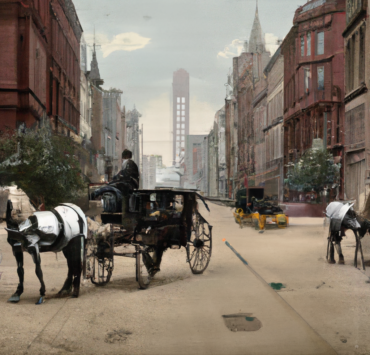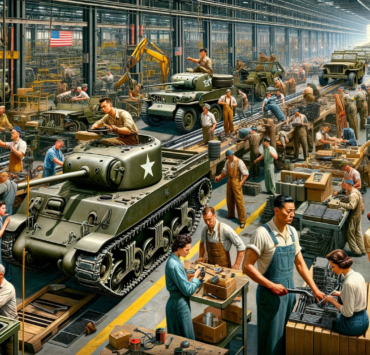In a thought-provoking article in the latest Harvard Kennedy School magazine titled “How can AI make cities better?” Beto Altamirano unravels the tapestry of the transformative power held by urban environments. These hubs of culture, innovation, and civilization have long been integral to our collective story. Yet, as they navigate the challenges of rapid urbanization, it becomes evident that embracing technology, particularly Artificial Intelligence (AI), could be the keystone to their sustainable evolution.
The Current Urban Landscape
Our cities stand at a crucial juncture. The challenges they confront, from traffic congestion to air pollution, from waste management to equitable development, are unprecedented in scale and complexity. The rapid pace of urbanization further exacerbates these challenges. If forecasts hold true, by 2050, a staggering 68% of the global population will reside in urban areas.
To truly understand these urban complexities, one must delve into the wisdom of visionaries like Jane Jacobs. In her groundbreaking work, “The Death and Life of Great American Cities“, Jacobs challenges conventional urban planning notions, advocating for a people-centered approach to city design. She emphasizes the vitality of organic urban communities, the importance of mixed-use development, and the necessity of promoting pedestrian-friendly environments. Her belief that cities should be designed for people, rather than just for cars or commerce, resonates powerfully even today. Her insights have encouraged many urban planners and community advocates to think more holistically about creating lively, diverse, and resilient urban spaces that prioritize human interactions.
Complementing Jacobs’ insights, Jeff Wood‘s work at the Overhead Wire Blog and Podcast further illuminates both the intricate challenges and vast opportunities of our smart cities. Wood’s analysis and discussions are crucial, bridging the gap between today’s urban hurdles and the technological solutions on the horizon.
Embracing AI: The Catalyst for Change
The solutions to many of the urban challenges may lie in the embrace of AI and other emerging technologies. In “Catalyst,” a book I co-authored with Bret Boyd, we delve into the importance of dynamic leadership and cross-sector collaboration. These concepts can be harnessed to drive innovative solutions, particularly in the realm of urban development.
Consider the work of Dimitris Bountolos at Ferrovial. Through a commitment to developing smart infrastructure, cities are offered a blueprint to become more efficient, sustainable, and livable. By melding the digital with the tangible, Dimitris is showcasing how infrastructure, when infused with technology, can redefine urban experiences.
Several companies are already leading the charge. Flow Labs and Rubicon Global, for instance, employ AI to tackle traffic management and optimize waste collection, respectively. Their innovative solutions not only enhance sustainability but also provide tangible results: reduced emissions, shorter travel times, and smarter waste processing.
Start-ups like Green City Watch and Gjenge Makers further exemplify the promise of AI. They’re tackling sustainability from novel angles, be it through promoting urban green spaces or transforming plastic waste into viable construction materials.
The Road Ahead: Challenges & Collaborative Solutions
While AI’s potential in urban development is vast, its widespread adoption doesn’t come without its challenges. The financial burden of these technologies, coupled with concerns over privacy and data security, are notable barriers. The rising threat of cyber attack is another challenge that must be addressed when merging any technology into the urban environment including AI.
Grayline’s Brandon Thomas has been leading our efforts in this arena, as we serve as the cybersecurity program manager for what will be the largest autonomous shuttle project when it goes live in 2025 (Jacksonville Transportation Authority’s U2C project). Gaps exist, but with concerted effort and resources, risk can be mitigated and safety maintained. More to be done, but best practices exist to ensure our infrastructure remains secure even as technology is integrated.
Beyond risk amid these challenges, there are visionaries who are reimagining the way cities operate. Gabe Klein, known for his transformative work in transportation and technology in cities like Chicago and Washington, D.C., is a prime example. His association with CityFi, a consultancy that advises cities on leveraging technology for holistic urban improvement, underlines the importance of integrating tech solutions with practical city needs. CityFi champions a people-centric approach, echoing the philosophy of Jane Jacobs, but tailoring it to the 21st-century urban landscape. Their endeavors highlight the value of cross-sector collaborations and the power of innovative thinking in reshaping city infrastructure and services.
Moreover, the union of public and private sectors can present a formidable solution. One need only look at the successful partnership between Grayline and the broader project team led by Balfour Beatty and the Jacksonville Transportation Authority in bringing the promise of autonomous vehicles to the public road. Another example is what the Atlanta city government has been doing with Rubicon Global. Through collaboration, they revolutionized waste management, resulting in significant reductions in emissions and landfill waste.
Conclusion
AI’s influence on urban development is undeniable. As the International Data Corporation predicts, AI will be a key driver in the digital transformation investments anticipated to reach $3.4 trillion by 2026.
To truly tap into this potential, we must prioritize collaboration across sectors. The goal? To build cities that are not only smarter and cleaner but also equitable for all its residents. Through the insights provided by thought leaders like Jeff Wood and the innovations powered by AI, we can pave the way to craft the cities of tomorrow.
Joseph Kopser is a lifelong problem solver committed to building the teams needed to take on our toughest challenges. He is currently President of Grayline after he co-founded and served as CEO of RideScout, before it was acquired by Mercedes. He is also a liaison for military & veteran affairs at the University of Texas. He served in the U.S. Army for 20 years earning the Combat Action Badge, Army Ranger Tab and Bronze Star. He is a graduate of West Point with a BS in Aerospace Engineering and also received a Masters from the Harvard Kennedy School and former member of the Army Science Board. He was recognized as a White House Champion of Change for his efforts in Energy and Transportation as well as won the U.S. DOT Data Innovation Award. He co-authored the book, Catalyst, a book focused on helping teams adapt to change. He is the Chair of the Board of Advisors for the CleanTX, an economic development and professional association for cleantech.
Join the Catalyst Monitor
Join our community, where we push out regular insights to help maintain situational awareness on technological and socioeconomic trends.



